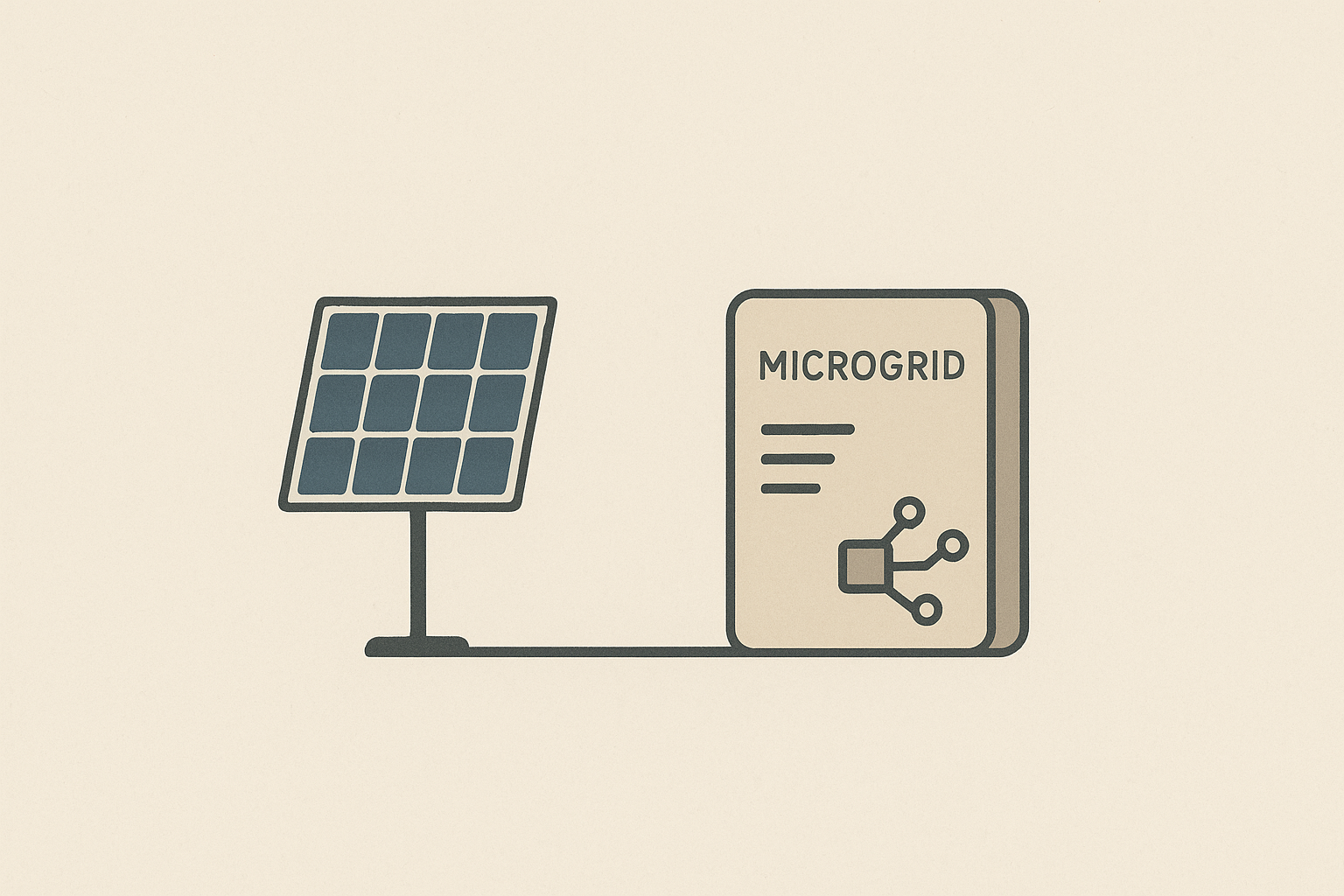Low-Carbon Data and ML: An Engineer's Framework for Sustainable Pipelines and Models
A tactical playbook for engineers and founders to reduce the carbon and cost of data and ML through design, tooling and business models.

The evergreen challenge
Data collection, storage and machine learning training have become foundational to modern products; they also carry a persistent cost in energy and emissions. Unlike fashionable libraries or short-lived business tactics, the energy profile of data and models is a structural factor that affects operating cost, regulatory exposure and brand trust for years. This briefing gives engineers, founders and product leaders a practical, future-proof framework to design low-carbon pipelines and efficient models, with both technical implementation steps and sustainable business strategies.
Why this is an evergreen problem
Energy used in compute is not a passing trend; it scales with adoption and model complexity, even as processors become more efficient. Governments and regulators worldwide are formalising decarbonisation targets, and businesses will face persistent pressure to prove lower operational footprints. For context, the UK continues to pursue legally binding targets to reach net zero by 2050, an imperative that shapes procurement and compliance over decades; see the UK net zero by 2050 target.
Did You Know?
Training a large neural network once can consume as much energy as several cars produce in their lifetimes, depending on the configuration; that cost compounds if models are retrained frequently or if experimental runs are not controlled.
Define success: measurable outcomes
Practical, evergreen metrics you must capture from day one:
- Energy per training run and per inference, measured in kWh
- CO2e per training and per inference (estimate using local grid intensity)
- Data retention and access patterns, measured by volume and retrieval frequency
- Cost per prediction and cost per active user
- Model performance per unit energy, for example accuracy per kWh
These KPIs are durable; they remain meaningful regardless of hardware or cloud vendor changes.
Two durable solution patterns
Below are two complementary, long-lived solution patterns. Implementing both provides robustness: software and model-level optimisation reduces absolute energy use, while architectural and operational choices prevent unnecessary work and align consumption with low-carbon supply.
Solution A: Energy-aware model lifecycle engineering
Overview: Treat each model like infrastructure; optimise for energy across its lifecycle from data collection and training to deployment and monitoring.
Step-by-step implementation
- Instrument and measure, before you optimise. Use reproducible runs and energy profilers to attribute cost to code paths.
- Adopt efficient baselines. Prefer smaller models that meet product needs; measure marginal accuracy gains vs energy cost.
- Use staged training. Do experimental work on small datasets and subsets, then scale only when justified.
- Apply model compression techniques: pruning, knowledge distillation and quantisation.
- Perform hardware-aware optimisation, compiling models to efficient runtimes (for example ONNX Runtime, TensorRT or Apple Neural Engine) and choosing appropriate CPU/GPU/TPU classes.
- Shift inference to the most efficient execution context: edge, local CPU, or specialised accelerator; avoid overprovisioned GPU fleets for low-latency workloads when a CPU or edge device will suffice.
- Automate cost-energy checks in CI, so model merges fail when they increase energy per request beyond a threshold.
Technical implementation: a reproducible profiling and optimisation flow
The following Python example shows a compact, practical flow to profile a training run's energy, to prune a PyTorch model, and to export it for quantised inference. Use this as a template to integrate into CI/CD.
import time
import torch
import torch.nn as nn
import torch.optim as optim
# Lightweight energy estimator helper (replace with codecarbon or RAPL on supported infra)
def estimate_energy_kwh(duration_seconds, tdp_watts=50):
# duration * power gives watt-seconds; convert to kWh
return (duration_seconds * tdp_watts) / 3600.0 / 1000.0
# Dummy dataset and model
class SimpleModel(nn.Module):
def __init__(self):
super().__init__()
self.fc = nn.Sequential(
nn.Linear(100, 64),
nn.ReLU(),
nn.Linear(64, 10)
)
def forward(self, x):
return self.fc(x)
model = SimpleModel()
optimizer = optim.SGD(model.parameters(), lr=0.01)
loss_fn = nn.CrossEntropyLoss()
# Training loop with timing and energy estimate
start = time.time()
for epoch in range(3):
# Simulated batch
x = torch.randn(32, 100)
y = torch.randint(0, 10, (32,))
pred = model(x)
loss = loss_fn(pred, y)
optimizer.zero_grad()
loss.backward()
optimizer.step()
end = time.time()
duration = end - start
energy_kwh = estimate_energy_kwh(duration, tdp_watts=75) # estimate using representative power
print('Training seconds:', duration)
print('Estimated energy (kWh):', energy_kwh)
# Simple pruning example (magnitude-based)
from torch.nn.utils import prune
for name, module in model.named_modules():
if isinstance(module, nn.Linear):
prune.l1_unstructured(module, name='weight', amount=0.25)
# Export to TorchScript and convert to ONNX for runtime optimisations
example_input = torch.randn(1, 100)
scripted = torch.jit.trace(model, example_input)
scripted.save('model_scripted.pt')
# ONNX export
torch.onnx.export(model, example_input, 'model.onnx', opset_version=12)
print('Model exported; prune+export reduces footprint for inference')
Notes on the example:
- The energy estimator is intentionally simple; replace it with a local meter such as RAPL on Intel, or a software tracer like CodeCarbon for cloud runs.
- Pruning used above is basic; for production use consider structured pruning and retraining to recover accuracy.
- Exporting to ONNX enables hardware-specific runtimes and quantisation; many runtimes provide integer quantised kernels that lower power use without large accuracy loss.
Operational guardrails
- Introduce a model-energy budget for each project; require sign-off to exceed it.
- Create a model registry that stores energy, accuracy and dataset metadata; treat the registry as canonical project documentation.
- Set up periodic re-evaluation; some optimisations lose relevance as hardware improves, and models may need re-tuning for new runtime constraints.
Solution B: Low-carbon data architecture and lifecycle management
Overview: Reduce unnecessary data movement, store only what you need, and place compute close to data where sensible. These patterns persist as best practice even as storage and compute prices change.
Step-by-step implementation
- Map data flows. Identify high-volume, low-value flows that can be sampled or summarised at source.
- Edge preprocessing. Push filtering, feature extraction and aggregation to edge devices or client SDKs when privacy and hardware allow.
- Adaptive sampling. Implement variable sampling rates tied to event importance, user consent and model sensitivity.
- Retention policy and cold storage. Apply strict retention rules; cold archive rarely-accessed data and delete when it no longer has value.
- Cache and deduplicate. Avoid repeated transfers of identical data; use content-addressable storage and dedupe at ingest.
- Schedule heavy batch jobs to low-carbon grid periods when using the cloud; many regions have predictable daily or seasonal carbon intensity cycles.
- Use federated or split learning for privacy-sensitive workloads where sending gradients instead of raw data reduces bandwidth.
Infrastructure patterns
- Hybrid edge-cloud: perform feature extraction on-device, send compact feature vectors rather than raw streams.
- Event-driven compute: use serverless functions or spot instances for non-critical batch workloads to avoid always-on capacity.
- Data meshes with ownership: decentralise retention decisions to domain teams accountable for energy and cost.
Simple code example: edge summarisation and adaptive sampling
# Example pseudo-code for an edge summariser in Python (suitable for a small Raspberry Pi or microVM)
import time
class EdgeSummariser:
def __init__(self, sample_rate_hz=1):
self.sample_interval = 1.0 / sample_rate_hz
self.last_emit = 0
def process_sensor(self, reading):
now = time.time()
# coarse filter: only emit if significant change
if now - self.last_emit > self.sample_interval and self.is_significant(reading):
summary = self.summarise(reading)
self.emit(summary)
self.last_emit = now
def is_significant(self, reading):
# implement domain-specific thresholding
return abs(reading - getattr(self, 'last_reading', 0)) > 0.05
def summarise(self, reading):
# compact representation
return { 'ts': int(time.time()), 'v': round(reading, 3) }
def emit(self, summary):
# send to the cloud via a small, authenticated POST or queue
print('emit', summary)
# Usage
s = EdgeSummariser(sample_rate_hz=0.2) # 1 sample every 5 seconds
s.process_sensor(0.12)
This pattern reduces volume and avoids transmitting high-frequency raw data. Small reductions per device scale to large energy and cost savings in fleet deployments.
Business and monetisation frameworks that last
Reducing carbon is not just an engineering challenge; it is an opportunity to create defensible product differentiation and stable revenue. Here are evergreen business models and pricing strategies that align incentives.
Model 1: Carbon-aware tiering
Offer standard and 'green' tiers. The green tier schedules non-urgent batch processing to low-carbon hours, uses quantised inference and promises a measurable per-user CO2 reduction. Price the green tier at a premium that reflects cost to offset scheduling flexibility and any additional engineering.
Model 2: Energy efficiency as a paid feature
Charge for 'efficiency mode' APIs that prioritise small, low-cost models for low-latency use, and larger models only when high-accuracy is requested. This is analogous to offering 'economy' and 'premium' compute classes.
Model 3: Sustainability SLAs
Sell sustainability service-level agreements that include annual carbon reports, optimisation roadmaps and guaranteed energy per prediction targets. Customers in regulated sectors, or those with procurement requirements, will pay for audited assurances.
Pricing blueprint and simple ROI
Example assumptions, conservative and evergreen:
- Average energy cost: 0.10 GBP per kWh
- Average energy per 1,000 predictions before optimisation: 0.5 kWh
- Optimisation reduces energy per 1,000 predictions by 50 percent
Cost before: 0.5 kWh * 0.10 = 0.05 GBP per 1,000 predictions. After optimisation: 0.25 kWh * 0.10 = 0.025 GBP. If you charge an annual subscription proportional to usage, offering a green tier at +20 percent price still leaves customers paying less in absolute energy costs and receiving a documented carbon reduction, creating a win-win.
Governance and compliance (evergreen considerations)
Regulatory frameworks will tighten but the fundamentals remain: document decisions, be auditable, and use standard accounting for emissions. Maintain a clear data retention policy, keep provenance for datasets, and version models with metadata that records energy and compute used. These practices are durable and reduce risk as laws evolve.
Pro Tip: Embed energy and carbon metadata for every model checkpoint and dataset; make it searchable in your model registry so engineering and procurement can make informed trade-offs.
Integrations with hardware and circular product design
If your product includes physical devices or edge hardware, align software energy optimisation with device lifecycle strategies. For hardware-focused readers, this work complements long-term device service patterns; see The Circular Hardware Playbook: Sustainable Business Models for Long‑Lived IoT and Renewable Equipment for device business models that match efficient software practice. When hardware and software are co-designed for longevity and low energy, total lifecycle emissions fall significantly.
Common challenges and durable mitigations
- Obstacle: Lack of measurement. Mitigation: Start with coarse estimates and iteratively refine; never delay action awaiting perfect meters.
- Obstacle: Accuracy vs energy trade-offs. Mitigation: Measure marginal improvements and adopt user-configurable accuracy modes.
- Obstacle: Vendor opacity. Mitigation: Require energy and carbon reporting in vendor contracts and use on-premise tests when needed.
Q&A: What if my customers demand the highest possible accuracy regardless of cost? Provide a hybrid option. Offer high-accuracy models for critical use-cases, but default products to energy-efficient models and make the higher-cost option a conscious upgrade. Transparency engenders trust.
Implementation playbook, roles and timelines
Three-month pilot roadmap you can repeat across product lines:
- Weeks 1-2, Discovery: Map data flows, select a pilot model and capture baseline energy and cost metrics.
- Weeks 3-6, Experimentation: Implement profiling, run pruning/distillation experiments and test an edge summariser or sampling policy; measure delta in kWh and performance.
- Weeks 7-9, Integration: Add energy checks to CI, export optimised runtimes and run A/B tests for user impact.
- Weeks 10-12, Launch & Governance: Offer an opt-in green tier, document policies in the model registry and train teams on the new controls.
Team roles
- Engineering lead: instrumentation, model lifecycle, CI checks
- Data scientist: experiments with distillation and quantisation
- DevOps: runtime selection and scheduling to low-carbon periods
- Product manager: user experience for accuracy/efficiency modes and monetisation
- Compliance/operations: retention policy and audit trails
Long-term culture changes that stick
Make energy-efficiency part of every launch checklist: code changes should include an energy impact statement, model PRs must include an energy-per-request estimate, and procurement should include carbon reporting requirements. Over time this becomes standard practice rather than a special programme.
Warning: Do not rely solely on offsets. Offsets can be useful for residual emissions, but they are not a substitute for measurable reductions in energy consumption; regulators and customers increasingly expect direct reductions supported by documentation.
Final considerations and strategic outlook
Strategies that reduce energy use, trim data waste and make product decisions transparent are evergreen because they address structural drivers: cost, regulatory risk and user trust. The technologies for optimisation will change, but the underlying levers remain: measure, minimise, and shift. By treating energy and data lifecycle as first-class product constraints, organisations build resilient, lower-cost systems that align with long-term societal goals.
Evening Actionables
- Instrument one model training run this week and record duration, kWh estimate and CO2e using a local estimator or CodeCarbon.
- Implement a simple pruning or distillation experiment on a non-critical model and measure accuracy versus energy delta; store results in your model registry.
- Add a line to your PR template requiring an energy-impact statement for model-related changes.
- Create and publish a one-page retention policy for a dataset you own; identify what can be summarised at the edge.
- Evaluate a green-tier pricing option or an energy-efficient feature set to discuss with your product and legal teams.





Comments ()